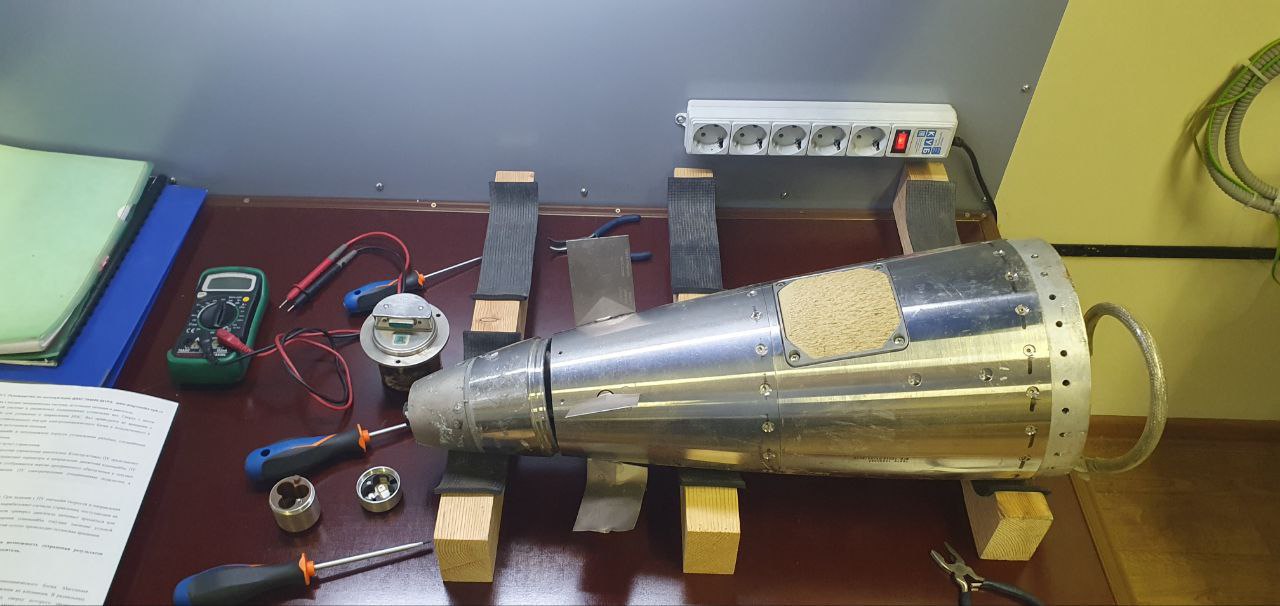Russia seems to have captured an intact rocket of the American High Mobility Artillery Rocket System (HIMARS) as per some social media posts, which they claim is now being examined to find its weaknesses.
-
China Could Arm Pakistan With Its ‘Satellite Killer’ SLC-18 Radar; Worries Mount For Indian Defense Forces
-
400 Seconds! Iran Sends ‘Front Page’ Threat To Israel; Says Its Hypersonic Missile Can Destroy Tel Aviv In Under 7 Minutes
A picture of one such rocket went around on pro-Russian groups and pages on social media, where many handles claimed it was acquired through espionage means and transported to Russia through a third country.
Experts believe Russia will specifically look at the HIMARS missile’s guidance system and enhance the countermeasures it had developed against it a few months ago, and further limit its effectiveness.
The Russian Ministry of Defence (MoD) did not officially comment on the matter, but the message circulated on multiple Twitter handles.
Russians have obtained a HIMARS missile that said to be smuggled into Russia through a third country. Russian engineers are studying it. pic.twitter.com/KNCxNlzn07
— Kiriti (@in20im) November 11, 2022
The Lockheed Martin M142 HIMARS is the third big weapons system, along with the Javelin and the M777 lightweight howitzer that the United States armed Ukraine with in July this year as a part of a $270 million package.
The complex of six tube rockets is mounted on a wheeled truck that is guided via satellite navigation and can deliver a variety of ammunition and explosives on targets at nearly 100 kilometers.
The HIMARS initially reportedly achieved many tactical successes, destroying Russian military bases, ammunition depots, and some command and control centers.
The Russian Ministry of Defense (MoD) later claimed having destroyed several HIMARS launchers and intercepted at least a hundred HIMARS rockets using its air defense (AD) systems.
EurAsian Times had done a cost-benefit, tactical and comparative analysis of the HIMARS and its Russian equivalent, the 9A54 Tornado. The latter was cheaper, with more range and a greater payload.
The HIMARS was last used by Ukraine on Sunday, according to Russia, which accused the Armed Forces of Ukraine (AFU) of firing five rockets into the Sabovka suburb of Luhansk.
The Luhansk People’s Republic (LPR) Representative Office made a claim. “Information about the victims and damage is being specified,” the LPR statement said. Before that, on November 11, Russian MoD said it intercepted 33 HIMARS rockets.
What Will Russia ‘Study’ in the HIMARS?
A screenshot of a tweet shared in another Twitter post, showing a HIMARS rocket head on a table while attached to various devices with wires, piqued everyone’s curiosity.
Former Indian Air Force (IAF) fighter pilot Rajiv Tyagi believes the Russians could be attempting to understand the rocket’s guidance system (either the Inertial Navigation System or the Global Positioning System).

The frontmost part of such missiles/rockets houses the seeker (depending upon the type of missile), the guidance system, and the warhead, followed by the rocket motor and the exhaust.
The guidance is connected to and drives movable fins (or surface controls, rudders) on the missile’s body to change and manipulate its flight path. The HIMARS rocket’s fins seem to have been located on the nose cap.
Former Defence Research and Development Organization (DRDO) Scientist ‘G’ Ravi Gupta said countries with advanced industrial, defense manufacturing, and scientific bases are less likely to completely reverse engineer an enemy system and would be specifically interested in a particular technology or component.
Gupta, too, believes that Russia might be interested in the HIMARS’s guidance, navigation, and guidance control system.
“They are likely to examine the ‘design philosophy’ of the HIMARS rocket and find its weak and blind spots to make it miss the target,” Gupta said. After identifying precise countermeasures, the next step would possibly be to make a better product that covers the captured system’s shortcomings,” he adds.
Aerodynamic performance around the rocket’s body is another area Russian engineers might try and study.
Talking about reverse engineering in general, Gupta said peer competitors “enhance their knowledge base” in areas they are lagging in and usually do not precisely and fully replicate a complete platform.
In other words, Russia is unlikely to reverse engineer everything from the HIMARS rocket’s guidance, guidance control, materials, and propulsion motor.
“Russia has been known to have excellent capability in metallurgical sciences while the US is relatively more advanced in composite materials that involve carbon fibers.
This doesn’t mean Russia is poor in carbon-fiber composites, and the US lags in metallurgy. It is just a scientific field a country ends up advancing in slightly, but while maintaining significant capabilities in others,” Gupta explained.
Gupta specializes in materials sciences.
HIMARS’s Importance for Ukraine?
The HIMARS initially allowed Ukraine to meet its gap in artillery systems compared to Russia, which used long-range gun and tube rocket systems, part of its doctrine where ground forces move to support artillery and not the other way around.
The system’s combination of accuracy and range was an improvement over its Soviet-era 122 mm Grad, 200 mm Smerch, and 220 mm Uragan systems, which were unguided rockets.
It did take out many Russian ammunition depots and supply lines in the rear before Russia found a way to intercept the rockets.
The EurAsian Times had reported how the Buk-M3 medium-range surface-to-air-missile (SAM) system had emerged as the favorite to attack HIMARS. Capable of detecting targets flying as low as five meters, the Buk-M3 extrapolates the launcher’s exact location by tracking the multiple rockets fired from the launcher in short intervals.
The HIMARS fires rockets like the M26, M26A2-ER, Guided Multiple Rocket Launch (GMLRS) M30, GMRLS M31/M31A1/M31A2, and the GMLRS XM404 and XM403.
The US, last week on November 10, approved the sale of 400 GMLRS rockets to Finland, ostensibly to protect against a possible clash with Russia. The deal costs $535 million and includes other related elements and logistics support systems.
- The author can be reached at satamp@gmail.com
- Follow EurAsian Times on Google News




